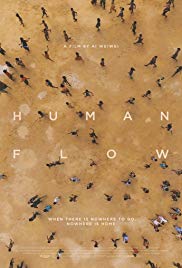How UK Spent the Summer: Serving a Global Community
By Loretta Stafford

Josie Dupler traveled to Iraq and Turkey to teach and tutor immigrant children.
By Loretta Stafford

Josie Dupler traveled to Iraq and Turkey to teach and tutor immigrant children.
Dr. Jeff Rogers to introduce Zwei Leben (2012, 97 min., in German, Norwegian, English, Russian, etc.), Bill Gatton Student Center, Worsham Cinema, Late Night Film Series, Co-sponsored by the International Village LLP, the Year of Migration, and the Department of Modern and Classical Languages, Literatures, and Cultures.

Dr. Roald Maliangkay Lecture on K-pop (invited speaker from ANU, collaboration with Indiana University), Patterson Hall 218, Co-sponsored by the Department of Modern and Classical Languages, Literatures, and Cultures, the International Village LLP, and the Year of Migration.
(Speaker TBA) Un Padre No Tan Padre (2016, 94 min, in Spanish), Bill Gatton Student Center, Worsham Cinema, Late Night Film Series, Co-sponsored by the International Village LLP, the Year of Migration, and the Department of Modern and Classical Languages, Literatures, and Cultures.

Dr. Diane Loeffer to introduce Human Flow (2017, 140 min., in English, documentary), Bill Gatton Student Center, Worsham Cinema, Late Night Film Series, Co-sponsored by the International Village LLP, the Year of Migration, and the Department of Modern and Classical Languages, Literatures, and Cultures.

By Olivia Ramirez

Tsage Douglas standing in front of the Federal Reserve Bank of Philadelphia.
"Culture & Credibility in 21st Century Economics" lecture by John Cirigliano.
With UKY's FLIE students we will discuss how language & economics & culture, in combination, provide opportunities for fascinating interactions & revenue streams; & investments that spread risk across political, economic, currency, duration, & cultural factors. John Cirigliano's investment & operating interests most frequently form across the texture of his ethnic, educational, language, ethical & economic proficiencies.Refreshments to follow.
Department of Modern and Classical Languages, Literatures, and Cultures Post-Keeneland Alumni Meet & Greet at West 6th Brewing from 4-7pm Saturday October 27th featuring food provided by Ouita Michel www.ouitamichel.com.
The Department of Modern and Classical Languages, Literatures, and Cultures (MCLLC), Department of Hispanic Studies, and the International Studies Program invites you to the 2023 World Languages & Cultures Alumni Weekend.
Thursday, October 19, 2023
Alumni Keynote Presentation
Gatton Business and Economics Building - Room 191 | 7:00 pm
Cynthia “Didi” Rapp (Russian Studies, BA ’75, Geography, MA ’76) spent four decades as a public servant and closed out her career as the chief of staff for the director of the CIA. Did was inducted into the College of Arts and Sciences Hall of Fame in 2022.
Friday, October 20, 2023
Alumni Career Day
Jacobs Science Building - Atrium and Classrooms | 1:00-4:00 pm
Language and culture majors will connect one-on-one with alumni to learn about professional pathways and potential careers. Breakout sessions with alumni and students will be grouped by field - business, government, non-profits, and law/medicine/education.
Alumni and Faculty Reception
Ethereal Brewing at Cornerstone - 401 South Limestone | 6:00-9:00 pm
Alumni and guests are invited to join current and former language faculty for dinner and drinks.
Saturday, October 21, 2023
Alumni Day at Keeneland
Keeneland – 4201 Versailles Road, Lexington | Time TBD
Join alumni and friends for a day at the races! Grandstand tickets for alumni are complimentary. Additional guest tickets are available for $25 each. Tickets are limited.
Hosted by the MCLLC Alumni Board.
RSVP to all events by Monday, October 2 here.
Contact Taylor Kincaid at taylor.kincaid@uky.edu with questions.
The College of Arts and Sciences hosted a welcome BBQ for incoming students from China. The outing provided students an opportunity to connect with fellow classmates, future professors, and A&S staff. The students were greeted by A&S Dean Mark Kornbluh and Dr. Huajing Maske,Director of the Confucius Insitute and Executive Director of the Office of China Initiatives.